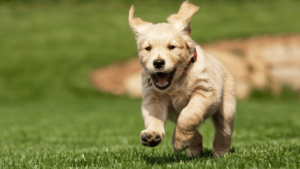Crate training is perhaps the most effective method of dog training, but it can be difficult to start crate training your dog. Many dogs simply do not like the crate, so crate training can be a long process. There are ways to help crate train a dog, though. It just takes a bit of time and patience.
Crate training a dog is the process of conditioning a dog to accept a dog crate as a safe and comfortable place. Many advocates believe that dogs are natural den-dwellers and that a crate may become a natural den substitute.
In addition, crate training may help dogs that have poor chewing skills or are overly rowdy. Many experts also believe that creating your dog when they are young will make them more obedient and resistant to overly rough handling from a young age onwards.
In general crate training dogs can be a difficult and somewhat frustrating task. Some people believe that dogs should be “crate-proofed”, meaning they should not be allowed to enter their own pens and crating areas at night. Other people believe that all dogs should be confined to their own rooms at all times.
While crate training dogs can be frustrating, it can be useful. Dogs are naturally den-dwelling animals and prefer to be with familiar individuals and things. A dog will often try to get its own way by exhibiting odd behavior such as whining, barking, or running away from you.
This type of behavior is usually indicative of an underlying issue. If the dog is trying to establish dominance over another dog or human, crate training can often be useful because the dog is afraid of being left alone or feeling abandoned. In order to eliminate the problem, you may need to eliminate the source of the aggression.
Many people also advocate crate training puppies. However, it is not advisable to start crate training puppies right away as they may not be psychologically prepared for the changes. It is important to start crate training puppies while they are still at home in their puppy stage.
Forcing a dog to return to its cage or pen while it is still a puppy can be very difficult for the animal. Instead, leave the puppies in their crates for periods of time while they eat, sleep, drink or just relax. Puppies who are used to being in their crate for periods of time while they are relaxed may be less likely to develop fear if given the opportunity to go back to their crate.
There are many benefits to crate training your dog. First, most dogs are very clean and prefer to be cleaned up after themselves. Crates help to prevent unwanted messages on your pet’s bed or floor.
Secondly, crates provide a safe place for pets to retreat when they are experiencing discomfort or fear. Lastly, crates reduce the risk of your dog developing destructive behaviors if it is not used properly.
The final step in crate training your puppy is to take your puppy outdoors on a leash once he has developed the habit of going in his crate on his own. This will help the dog recognize that his boundaries need to be enforced outside of the crate.
If he becomes fearful of the leash, take him outdoors on the leash until he calms down. After your puppy has become accustomed to going outside on the leash, continue taking him outside every time you are heading out for the day.
Crate training dogs can be an enjoyable experience. Just remember to take it slow and be patient. You should be able to crate train most dogs with patience.



